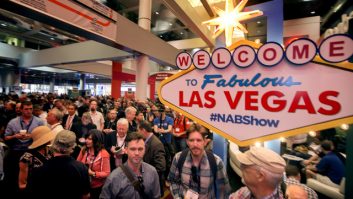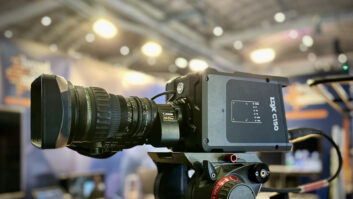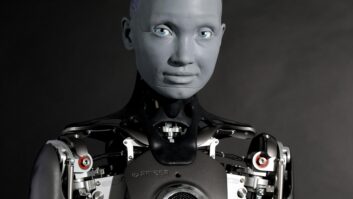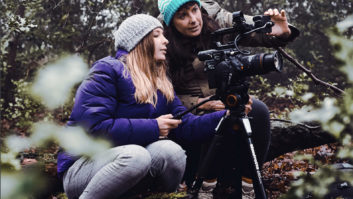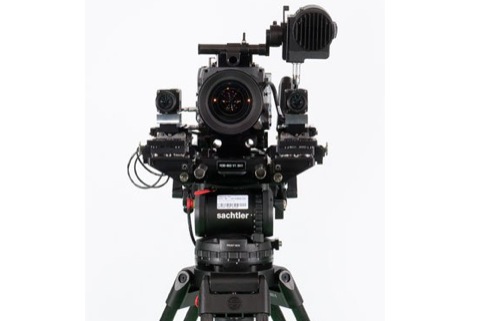
Walt Disney Studio’s 3D short film shot with a revolutionary trifocal camera system is to be shown at NAB.
The 10-minute experimental live action film Make/Believe is in the final stages of post production. It was produced by German technical research institute Fraunhofer HHI in association with Disney and Berlin outfit Real Life Films using Fraunhofer’s hybrid 2D/3D camera system and software.
The system, which comprises a rig mounted with two satellite mini-cams either side of the main ARRI Alexa camera, is used to record 2D pictures and to generate depth maps for creating stereoscopic 3D in post.
“The film is in the very latest steps of post production and should be ready before NAB and shown on our booth,” said Ralf Tanger, Fraunhofer’s project manager.
In recent weeks the system’s IndyCam GS2K satellite cameras have been replaced with SinaCams cameras from German firm Solectrix. The company’s founders contributed to the engineering design of the Alexa’s digital core.
“This is a big improvement,” said Tanger. “The previous system required a special delay box situated between the Alexa and the satellite cameras which meant we had to manually adjust signal delay and check the signal with a stroboscope which was prone to error. The SinaCam is able to take the signal directly from the Alexa so that the signals of all cameras are synchronised and we can freely change the shutter angle.”
The benefits of the Trifocal system include being able to shoot 3D to the same schedule as 2D.
“On the Disney short we shot in a very tight three-day schedule that had to be as quick as for a 2D set-up (a 2D version is already produced) and in that we were almost successful,” said Tanger. “The second benefit is that compared to native stereo 3D you do not first burn in your target screen size. You can do that in post. Also, you can create all 3D creative decisions and adjustments for disparity in post so that you do not need a stereographer on set.”
Also ready for NAB is new software that enables the post production element.
There are only three Trifocal systems around. Two are owned by Disney, the third by Fraunhofer. Tanger said the research lab is open to any producer wishing to test or shoot with the system.
By Adrian Pennington
www.hhi.fraunhofer.de
